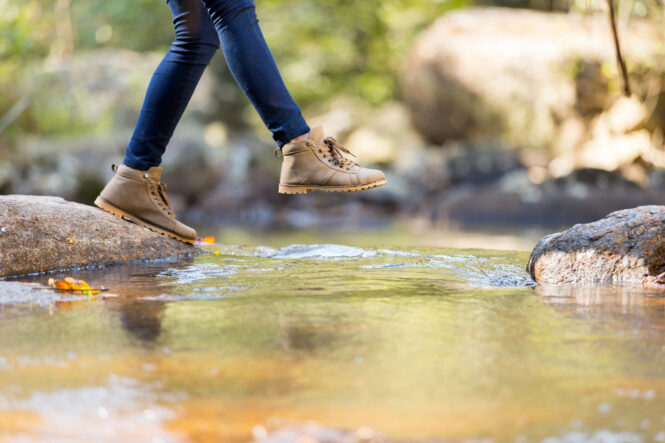July 11th is National Swimming Pool Day and as you may know, exercising is one of the best things you can do to help relieve your painful joints. However, it is very important that you choose the right type of exercises to improve your joint pain and not make it worse. Those of you with joint pain and arthritis should try out swimming this summer as a great zero-impact activity. It allows you to use all of your muscle groups, increase your range of motion, and also improve your cardiovascular health. The water helps to support your body and reduce the effect of gravity, so it takes the strain off of your joints. It is a great alternative for those who cannot undertake high-impact activities.
You don’t have to do laps for hours to get the benefits of the water. Just soaking your body in warm water helps to increase your blood flow. It also helps to relax the tension in your muscles and reduces inflammation to the joint area. Doing simple movements, like stretching while dipping in warm water is good enough to promote healing.
Here are a few more swimming exercises that are great for those with joint pain:
- Walking around a warm pool. Those who struggle to walk regularly because of their joint pain would benefit from walking in a pool. The water reduces the effect of gravity and therefore, reduces the impact on your joints.
- Arm Circles. While keeping your head above the water and lower the rest of your body into the water. Keep both elbows straight. Make small circles with your arms and then gradually increase the size of the circles. Do not raise your arms out of the water or let them cross.
- Doggy-Paddle. This stroke helps to strengthen your arms and legs. To do it you just kick to move forward and simultaneously paddle your hands and arms under the water to move forward.
- The Crawl. Similar to the doggy-paddle stroke, the crawl keeps you afloat by paddling only your hands under the water to make forward movement.
*** Avoid exercises like the breast stroke as it is a very stressful swimming style that can bring intense pressure to the muscles and body parts involved.
Getting Started

- Take a class. If you are not very comfortable in the water, try joining a class at your local fitness center, YMCA or an Arthritis Foundation Office. Many fitness centers offer water aerobic classes which are great, low-impact workouts.
- Be Safe. Swim somewhere that has a lifeguard.
- Stay hydrated. Dehydration causes damage and degeneration to your joints. So, make sure you are drinking an adequate amount of water a day.
- Don’t overdo it. If you begin to feel pain, take a break. Slow down if you notice swelling or redness. Remember to ice your joints for up to 20 minutes as needed after activity.
- Speak to your doctor. Talk about any concerns you have with your doctor. Ask about what sort of pain is normal as you are getting started and what pain is a sign of something more serious.
- Have fun! Many people find swimming more enjoyable than running. Finding activities that you enjoy and also help you stay active is key to living a healthier lifestyle.
If your pain persists, it may be time to meet with an orthopedic surgeon. Find one near you with our Find a Doctor tool.




